In Iningai (Yiningayi) country.
There was joy today and some claps, when Len told our tour leaders that he had tested negative for COVID. So far no one else on the bus has contracted it, though at least two that we know of have tested. We would be so pleased to make it to the end of the trip with no one else getting it. Anyhow … it is what it is … or, what will be will be …
So, today’s adventures. We arrived in Winton last night and spent most of the day in the Winton region, with just a 2-hour drive at the end to get to Longreach.
As I’ve been doing lately, I’ll share the itinerary outline for the day:
“Winton has a rich history with links to the Great Shearer’s Strike, Qantas, and Waltzing Matilda. However, in recent years the town is almost as well known for something far more ancient, the Dinosaurs! This morning we visit the Lark Quarry Conservation Reserve, containing the world’s only record of a dinosaur stampede.”
To be honest, we weren’t sure we were interested enough in dinosaurs to warrant devoting a whole day to them but once again we learnt that an open mind is a good thing to have, because there was a lot to enjoy. It’s interesting that (like Undara Lava Tubes and Cobbold Gorge), the two places we visited today were developed from finds by farmers on their properties.
The day started with the usual breakfast in our (less than friendly motel), followed by a 1.5 hours drive to our first tourist site. En route we spotted some great Aussie critters, including a wedge-tail eagle, an emu, and a (yet to be specifically identified) goanna/monitor. Finally, though, we reached the …
Dinosaur Stampede National Monument, Lark Quarry Conservation Park
(also known just as Lark Quarry or Dinosaur Stampede or Lark Quarry Dinosaur Trackways. This site is now managed by the nonprofit Australian Age of Dinosaurs organisation that we visited in the afternoon.)
As we had time before our tour, we were offered the opportunity to do the short Spinifex Walk. Newly-freed Len did this but I decided to conserve my energy, as I want to be well for Carnarvon Gorge in a couple of days, but it was beautiful out there and I did see some of the landscape. Here is a description from an interpretation panel in the site’s surrounds:
This is a harsh, but beautiful and peaceful landscape
I can look at its rugged features day in, day out, it is nature untouched.
The hills are the colour of the Earth, changing all the time
Bright, strong colours, turning deeper as the sun goes down.(Vince Keirnen QPWS, Ranger in charge, Bladensburg National Park and Lark Quarry)
Lark Quarry is considered to be the site of the world’s only known record of a dinosaur stampede, with its fossilised footprints being interpreted as a predator stalking and causing a stampede of around 150 two-legged dinosaurs. (Wikipedia says this interpretation has been challenged in recent years, with evidence suggesting it may have been a natural river crossing, but I don’t think we were told that in our presentation.)
Whatever! We did have a very interesting and entertaining presentation by another young, enthusiastic volunteer explainer. The site has over 3,300 footprints – of three different dinosaurs – but no bones have been found, to date, of the dinosaurs involved. Lawrence, our explainer, seemed a bit disappointed by this oldie group’s lack of familiarity with Aussie dinosaurs (except for the Muttaburrasaurus. Most of us knew that one.) After describing how footprints had been found – in the 1960s by station manager, Glen Seymour, in the nearby Seymour Quarry – and how the site had been brought to the point that they are now on display, we were taken to the “stampede site”. It comprises the ground with the footprints in situ, covered by a building to protect them. We looked at it all from a raised boardwalk. Lawrence took us through some of the thoughts and ideas that have been generated about these footprints. In so doing he gave insight into the scientific process, and made it clear that it was all theory until new evidence or thinking comes along to create new theories.
After this, we retraced our route back through Winton to the other side of it – around 2-hours drive – to get to the…
Australian Age of Dinosaurs
Here we had a sandwich lunch provided by the Cretaceous Cafe, before doing our tour, which involved us seeing first, the Fossil Room, and then driving across to see the Preparation Laboratory.
The Australian Age of Dinosaurs Museum of Natural History is apparently home to the world’s largest collection of Australia’s largest dinosaur fossils. It is a not-for-profit organisation, since October 2002, and was initially based at Belmont, a sheep station owned by David and Judy Elliott. (David Elliott found the first fossil – a femur – in 1999.) However, in 2006, says their site, “a rugged mesa and wilderness area 24km south-west of Winton known as The Jump-Up was donated by the Britton Family and the Museum relocated there in 2009”. (So many farming families, it seems, give back to their communities in all sorts of ways.)
The bone Elliott found was later identified as part of a giant femur from a Cretaceous sauropod that roamed the Winton area 95 million years ago. Sauropod species from the Winton Formation include Diamantinasaurus matildae, Savannasaurus elliottorum and Wintonotitan wattsi. Australotitan cooperensis. (If you are Australian you will recognise many nods to the local area in these names…)
Fossil Room
We started in the fossil room with another young enthusiastic explainer. I am greatly enjoying seeing such young people, to me, of course, so engaged with specific interests like this, and confidently speaking about them – albeit in a less formal style than we oldies are used to hearing from museums and the like. She repeated some information we’d learnt from Lawrence, but then moved onto the specific fossils they have. Some are huge! These fossils, she said, are 30 million years older than Tyrannosaurus Rex. In passing, she told us that through one of their fossils, they had the world’s first evidence of crocodiles eating dinosaurs.
One of the most impressive finds here is the mega raptor, Australovenator, because it is Australia’s most complete carnivorous dinosaur (in terms of percentage of bones found).
Fossil Preparation Laboratory
We were driven over to this site on our coach, and here we were taken through the dig process, and then the actual preparation of the fossils, which involves painstaking drilling (using dentist type drills) of soil etc away from the bones) by, yes, volunteers! Unbelievable. It’s back-breaking eye-straining work.
However, it’s late, and I’m tired, and anyhow, I’m sure you don’t want to read more words about all this … just look at the few pics we’ve included for you. But, I want to add how astonishing it is that these two significant and absolutely beautifully designed sites are staffed (paid and volunteer) from/through such a small town like Winton. The energy and enthusiasm for what they do is palpable.
Longreach
We arrived in Longreach around 5pm. It is due west of Rockhampton and on the Tropic of Capricorn. It has a population of around 6,500, and is named after the ‘long reach’ of the Thomson River, on which it is situated.
Our home for the next two nights was to be the gorgeous and friendly, Mitchell Grass Retreat – a glamping site with an outdoor “deck” where we had a BBQ dinner our first night, and breakfast on our two mornings there. This is another business run by a couple with a great sense of hospitality and enthusiasm for what they are doing – and with a lovely sense of style and understanding of comfort in the way they have set up the “tents”. I’d come back here in a flash!

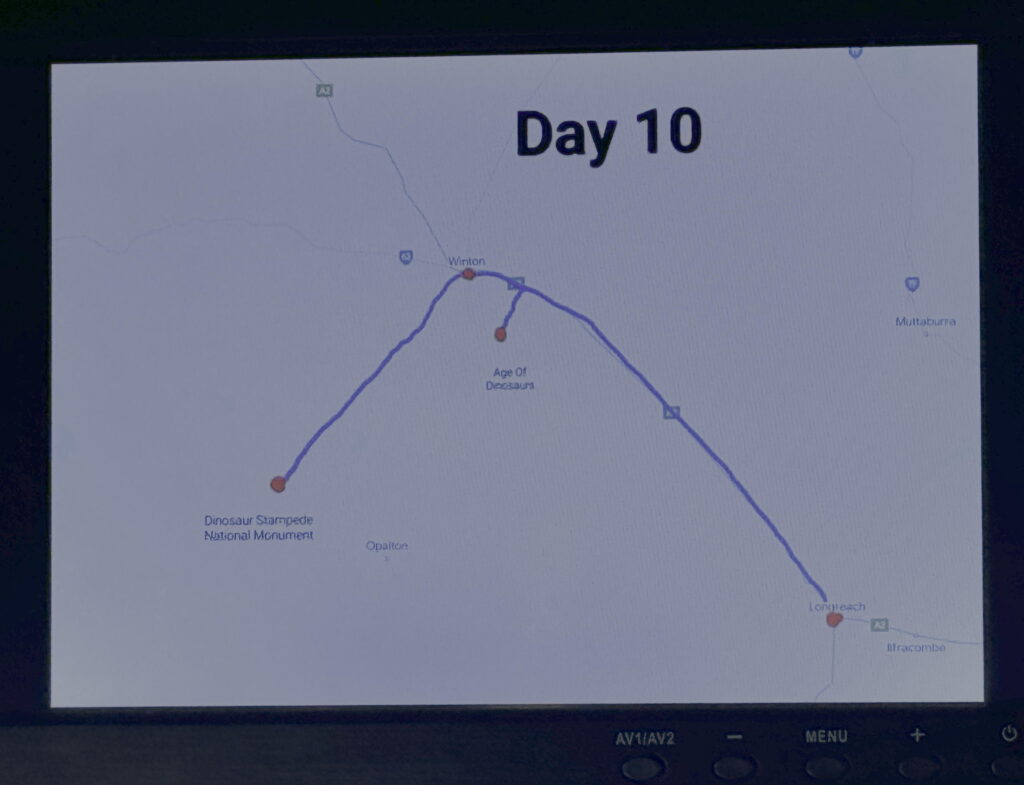
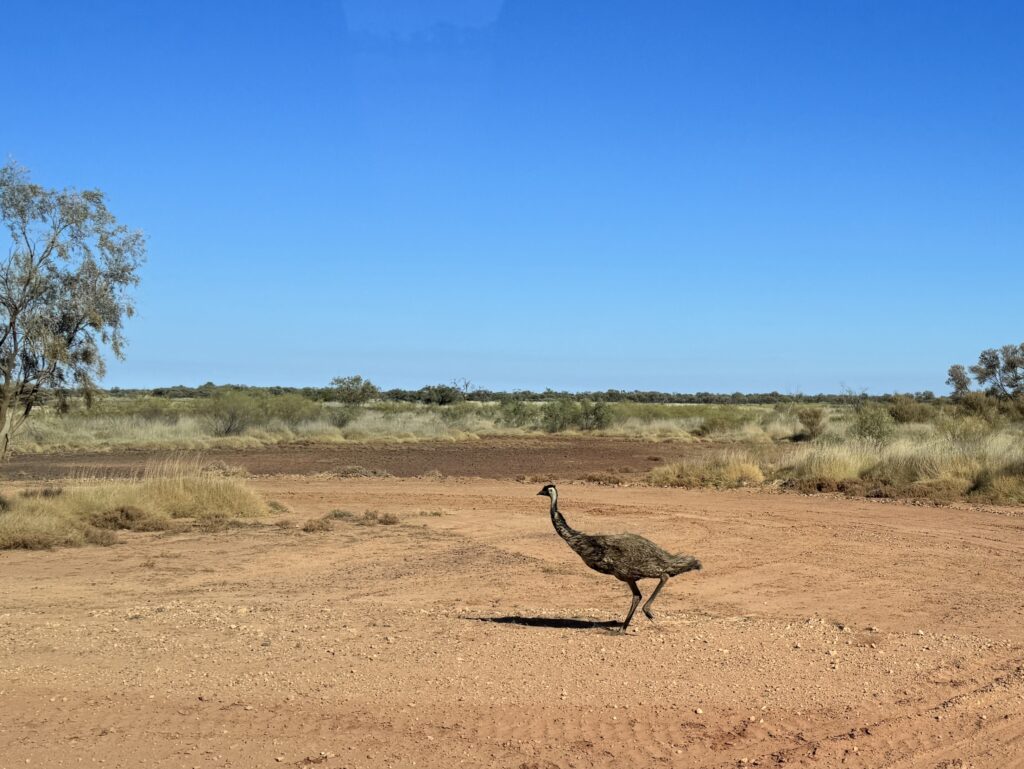
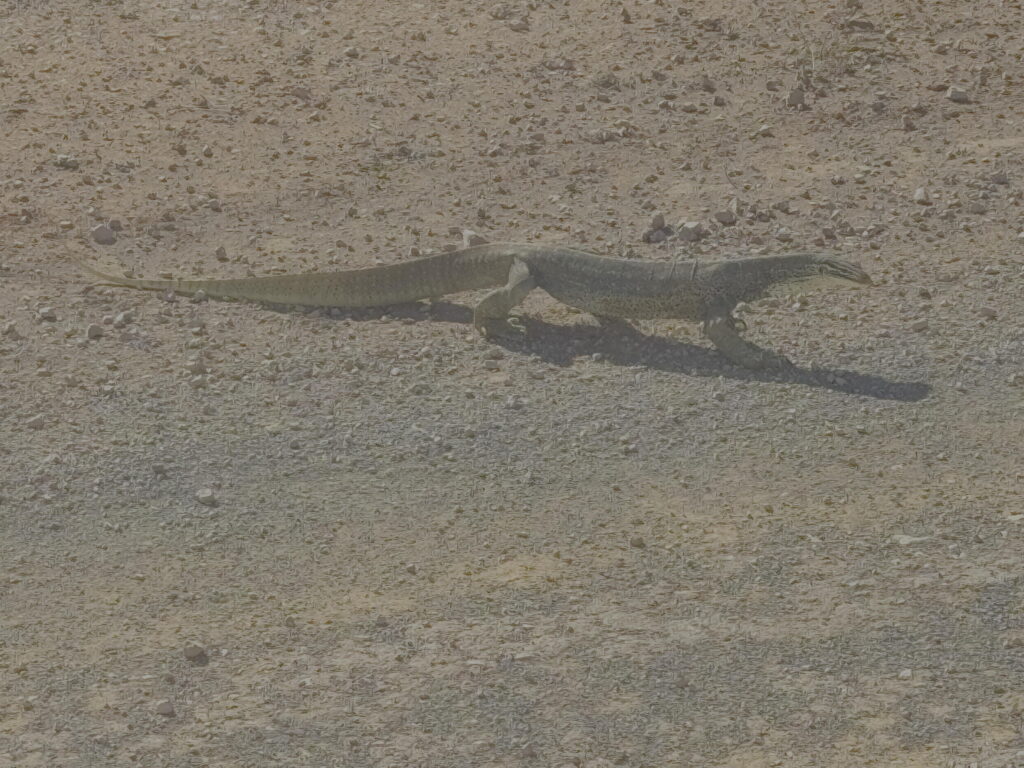
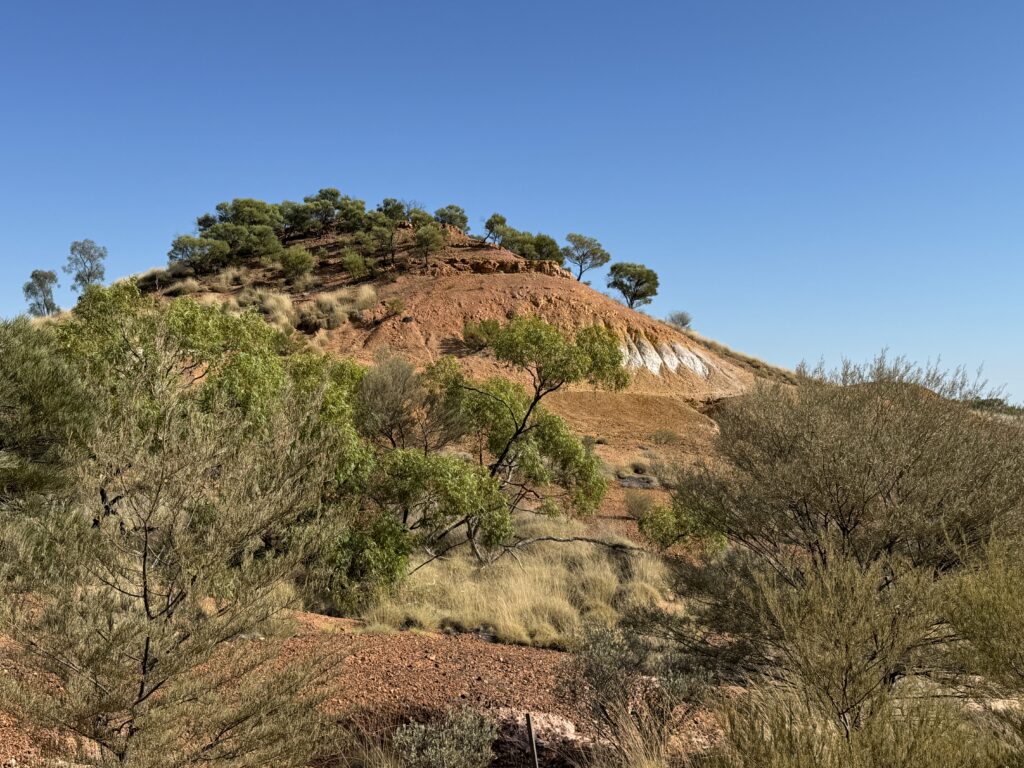
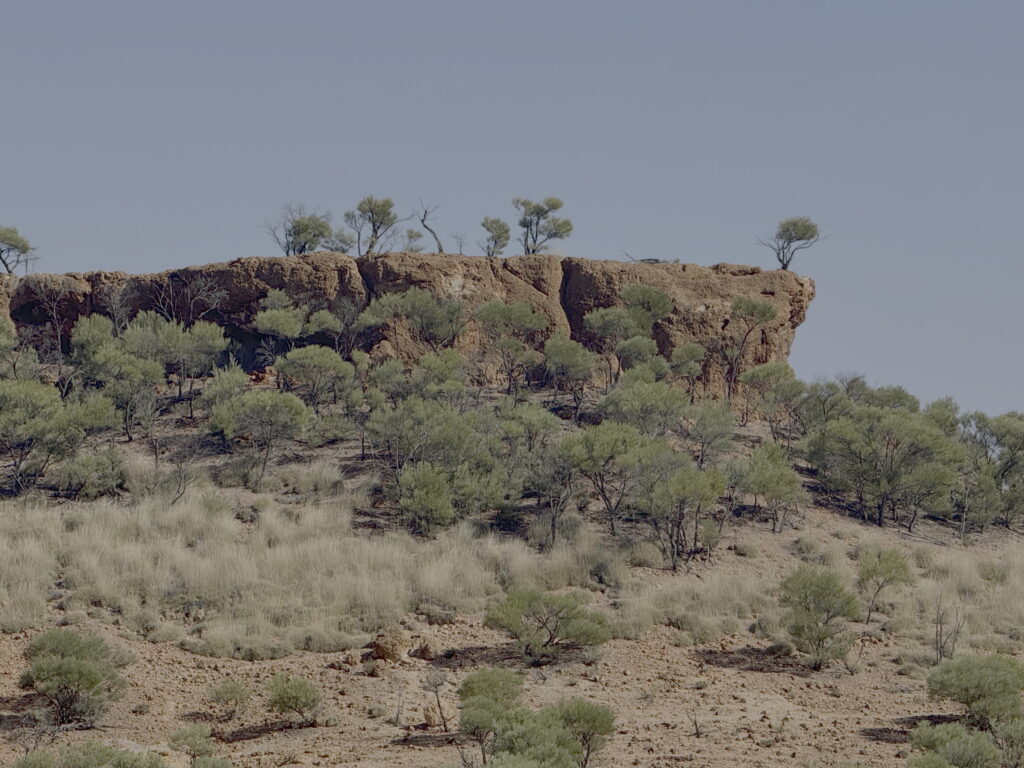

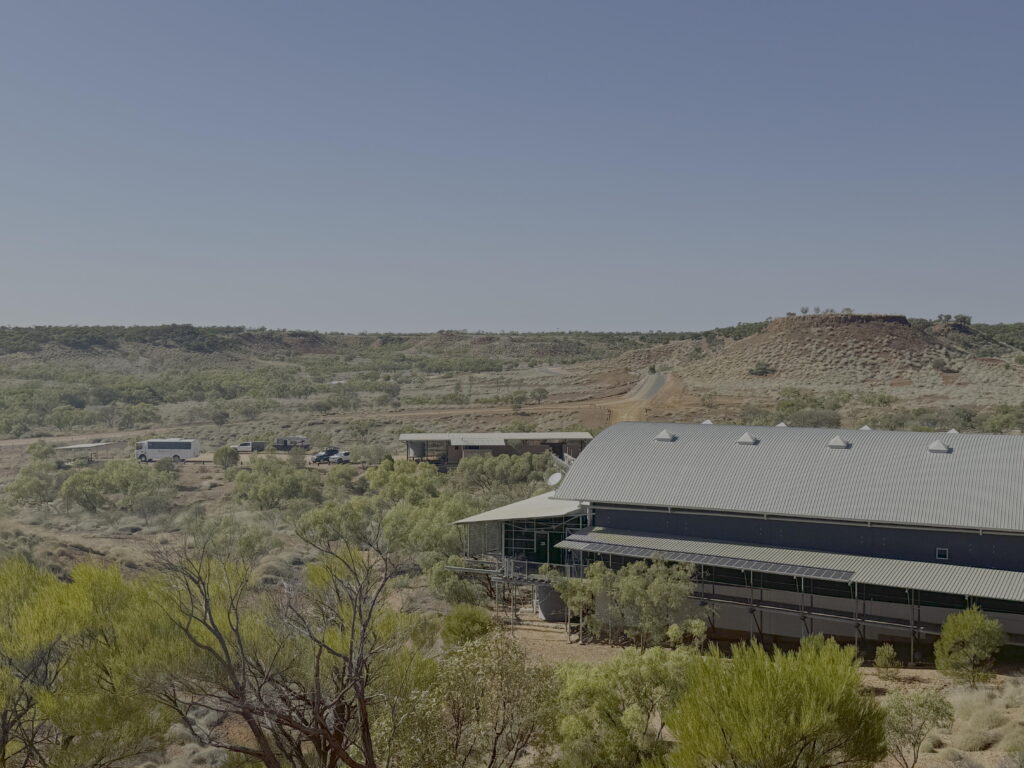
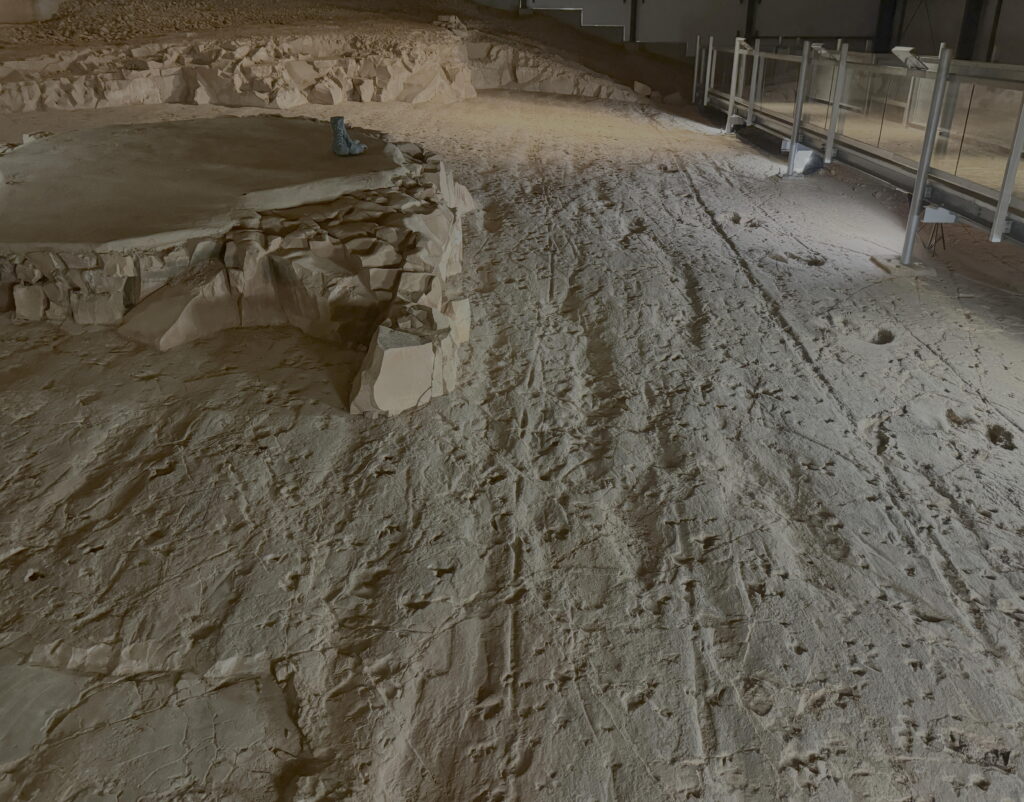

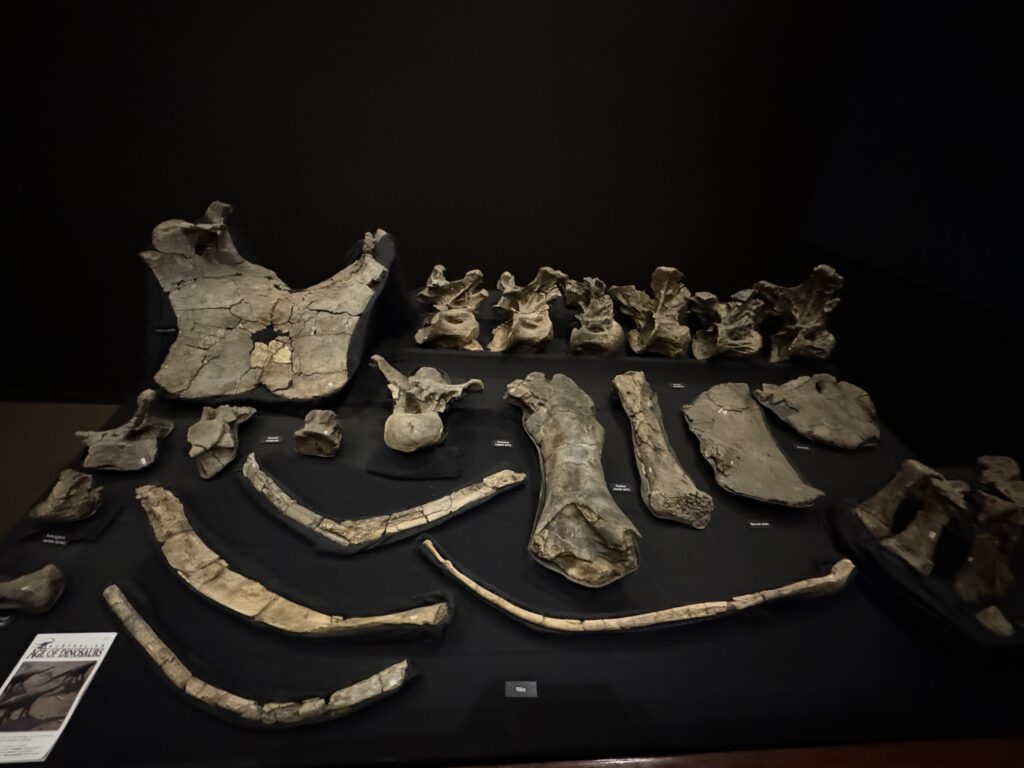




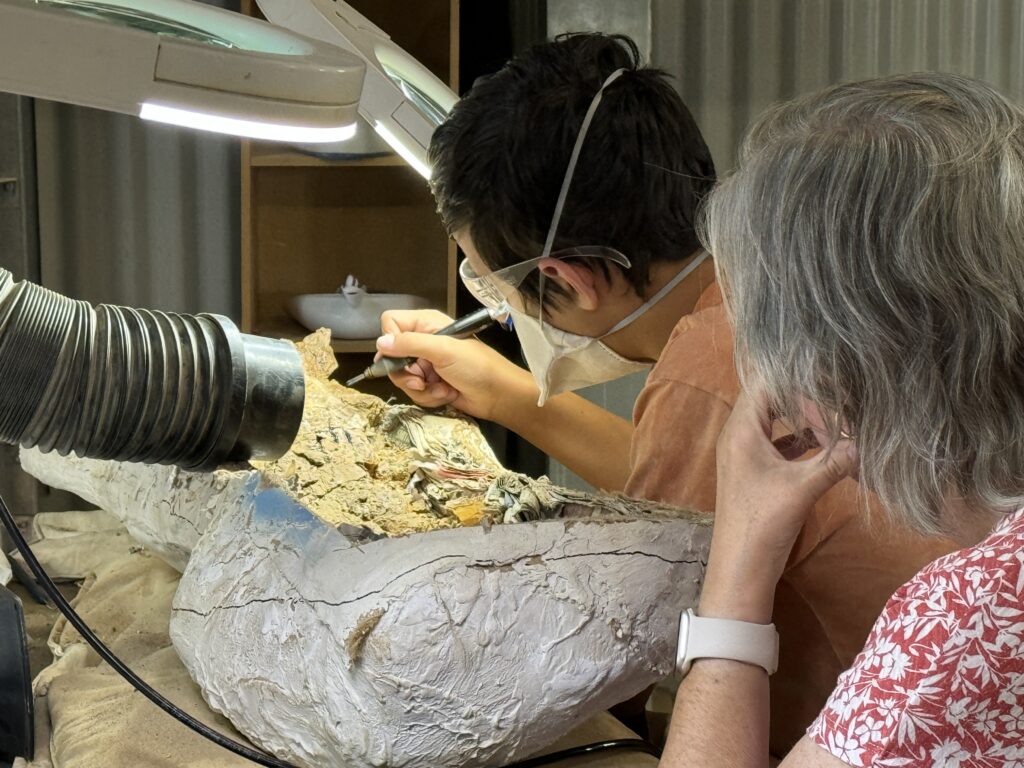
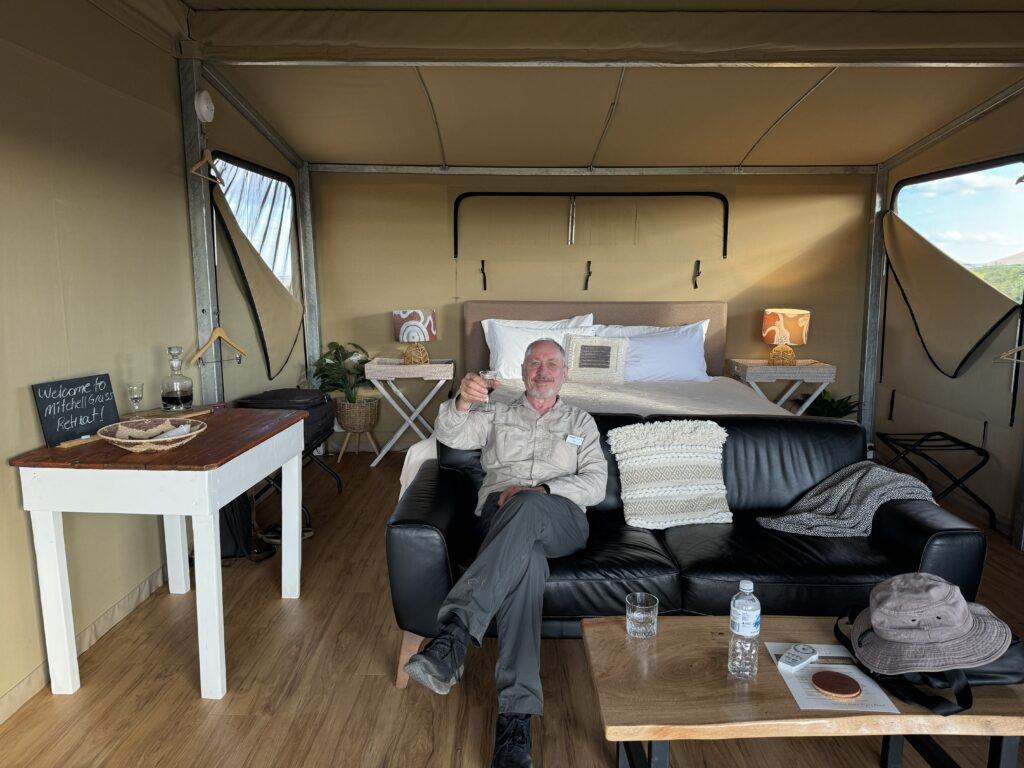
Good on Len for testing negative—but what about you, Sue? Are you enjoying calm and solo meals at the edge of the party? I could tell from the context what “Spinifex” means, but I’ve never heard of the word before and couldn’t find a definition online—other than a variety of Australian wild grass. Anyhow, good that Len felt up to the exercise. I’m sure that your dinosaur stories and pictures will entertain the grandkids as much as they entertained us. Imagine a dinosaur stampede!
That’s correct Carolyn — it’s a spiky native Australian grass that was a big feature of the Mt Isa landscape and of outback Queensland, so many things are named for it like the walk landed. And my old high school in Mount Isa used to be Mount Isa high school but is now Spinifex college.
No I am not solo. Len and I sit on the edge of the dining areas in view but separate.
Great commentary and wonderful pics and video as usual! Here’s to you Len testing negative and kicking back in the glamping tent with a lovely smile on your face! Thanks for the Emu pic and the Monitor video. I love all the critter shots as you know. The dinosaur “stuff” reminds me on the La Brea Tar Pits in LA. We always enjoyed seeing the behind-the-scenes work that the restorers do! Detailed meticulous work. Great site with all the wonders of places with probably larger budgets and staffing than Winton has available. I agree that is incredible and wonderful. Kids that are lucky enough to see it probably carry the memory forever. What a wonderful adventure! Hope you are feeling better, Sue. Seeing Len smile is like a light at the end of the tunnel….with a promise of coming through the darkness unscathed.
Thanks Trudy … it was a bumper crop of critters for you this time (though some a bit past their prime – haha.)
Looking forward to coming through the darkness unscathed, though we realise that in the scheme of things it’s a very minor darkness.
How good that Len is well again! I hope you will be better soon too Sue. I enjoyed your photos from around the 🦕 Stampede site. It’s an attractive landscape. With a little imagination, the first photo seemed to include a giant foot (orange) with six toes tipped or clawed in white… The protected fossilised footprint is impressive. It’s great that young people (locals?) are bringing such enthusiasm and commitment to research, cleaning, and presenting on dinosaurs and their history in that region. How graceful is the goanna/monitor in the video… almost on cue
with its miniature demo of reptilian ancestors. Your glamping tent looks great and the catering there sounds good.
Thanks Mary … I like your creative interpretation of my shot. The landscape was fascinating – and felt like a little oasis in the middle of very different landscape. It was amazing.
And yes, I have to assume the young people are local … but I’d love to have found out more about them in fact. What are their plans, for example.
This accommodation was probably the best of the trip … I’d stay there again.